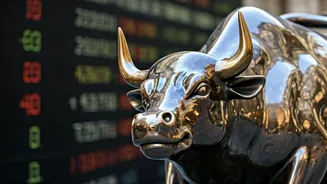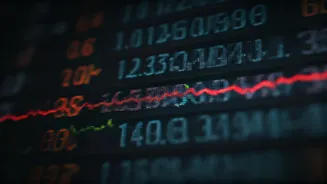Market Rate Cut
According to Steve Englander, the Global Head of G10 FX Research and North America Macro Strategy at Standard Chartered Bank, the anticipation for a rate cut
by the U.S. Federal Reserve in December has dramatically decreased. The shift is considerable, dropping from 70% the previous week to roughly 40% currently. This revision in market expectations stems from the increasingly firm language used by the Federal Open Market Committee (FOMC) members. The market's reaction suggests that investors are closely monitoring the Fed's actions, interpreting the hawkish tone as a signal of a more prolonged period of tighter monetary policy. This has triggered a risk-off sentiment in FX markets, with traders displaying anxiety about the Fed's intentions. The anticipation of a potential rate cut is now being priced out of the markets, as evidenced by the tough commentary coming from the Fed. Overall, the market's response demonstrates the sensitivity to the Fed's communications, leading to substantial volatility across global markets.
Fed's Wiggle Room
Englander indicated that traders are taken aback by the openness with which FOMC members are communicating their hawkish stance before the December meeting. Traditionally, policymakers avoid making definitive statements before pivotal decisions to preserve their flexibility. However, what stands out now is the absence of this 'wiggle room' from their statements, which has the markets on edge. They are worried about the possibility of the Fed pausing and then adopting an even more aggressive stance in the coming year. This adjustment in tone is already influencing global equities, driving up the value of the U.S. dollar, and pushing yields higher. The absence of flexibility means markets are more susceptible to sharp reactions and that a policy misstep is more likely. The fear is that the Fed might find itself in a difficult spot if economic data turns out to be weaker than expected, trapped after making such strong commitments.
Economic Indicators
One of the most significant concerns for the Fed, according to Englander, is the data that emerges after policymakers have already adopted a hawkish position. He highlighted a key indicator: hiring in the U.S. during the holiday season is at its weakest since 2011–12. If the November labor data comes in weaker than anticipated, the Fed may be constrained, unable to reverse its 'no-cut' stance easily. This predicament could lead to a sharp market response. Furthermore, Englander indicated the potential for corrections in high-growth tech stocks, which could be triggered by their high valuations. However, he emphasized that overall corporate profits are healthy, with positive surprises arising outside of the tech sectors. He believed that a broader earnings recovery would support markets long-term. Currently, markets are reacting primarily to sudden hawkish shifts from the Fed rather than the fundamental economic situation. The market's reaction underlines the vulnerability of the markets to the Fed's actions.
Political Pressure
Englander also considered the effects of political dynamics. He stated the U.S. administration is increasingly aware that voters feel economically insecure, despite the policies in place. He pointed to potential direct payouts, like a $2,000 cheque for households, as evidence of mounting political pressure to boost real incomes. The administration seems keen to prioritize real wage growth and household comfort going into the 2026 midterm cycle, which could influence the Fed's decisions. The need for a positive sentiment among households is considered crucial. The pressure to stimulate economic well-being adds another layer of complexity to the Fed's task. Political factors, combined with economic data, are set to shape the Fed’s forthcoming decisions and, consequently, global markets.

















